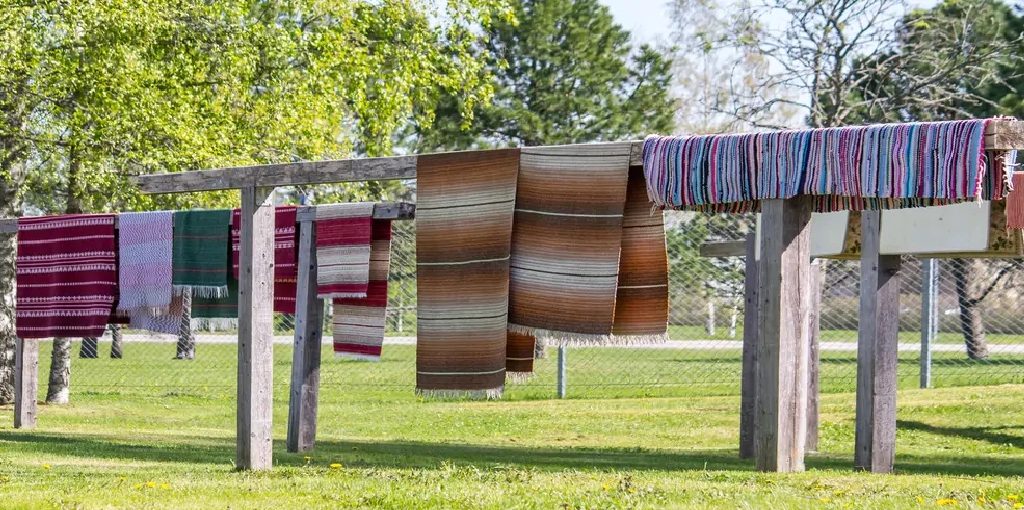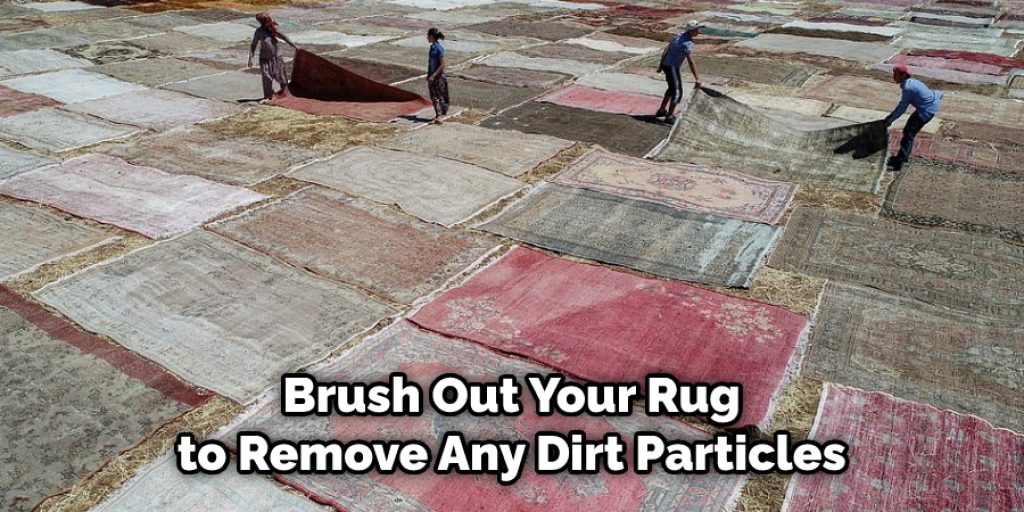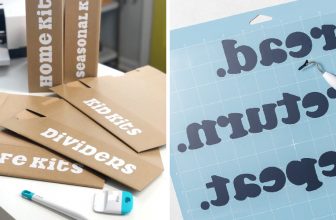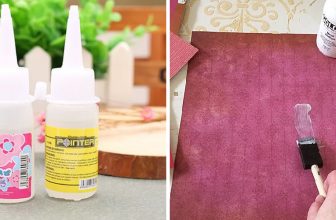How to Dry a Rug After Washing
Introduction:
A rug is an item of floor furnishing, traditionally made from woven fibers such as wool, but can be any textile material. They provide warmth and comfort on top of other surfaces such as a bare floor, mud, or grass.

Rugs are usually kept in place by placing them on top of a flat surface that is not level (such as wooden boards), tacking them in place (the most common method), or by heavyweights spread evenly across their upper surface; for example, books. In this article, I will discuss how to dry a rug after washing. So let us get started.
A Detailed Stepwise Guide on How to Dry a Rug After Washing:
- Place the rug in a dry area with good ventilation.
- Lay your wet rug flat so that all parts of the rug are resting on the ground or floor evenly. Please make sure there are no prominent wrinkles, as this might cause extra stress to be put on the rug while it’s drying and could potentially damage it!
- Cover your wet rug with towels, thick blankets, or anything that can help absorb any excess moisture if necessary – but make sure you place something underneath your damp carpet, too, because having something like our towels or blankets touch directly onto your floor can potentially cause staining (which is why we recommend using an actual towel to protect floors)!
- Leave out to dry for at least 24 hours in a dry and well-ventilated area. It may take longer than 24 hours, so be prepared to wait up to 48 hours if your rug is especially wet when it comes out of the wash!
- Once your rug has dried, remember to shake or groom the fibers with your hands so that all parts of the carpet are restored to their original state – this might cause a slight fluffing of the threads but will get rid of any loose fuzzies that have been generated from the washing process!
- Flip over and repeat steps 1-5 until no more water can be extracted from your rug. This shouldn’t take too long, as most carpets won’t need more than two flips!
- After your rug has dried, use a stiff brush to groom the fibers back into place. This will help restore any of the natural lusters that are lost when mats are regularly used!
How to Wash a Rug Properly?

- Pre-treat spots and stains with a liquid detergent or oxygenated bleach, such as OxiClean™. Gently rub in a circular motion to be sure the product is penetrating the fabric fibers.
- Use a top-loading machine whenever possible because it uses less water than a front-loader does. Fill the machine only halfway with a rug and cold water setting on a gentle cycle when using an agitator type of machine. Other devices have no set, so select “delicate” for machine wash settings without an agitator. Wash one rug at a time unless they are very small or medium-sized rugs, in which case you may add up to 4 rugs at once.
- Rinse with cold water until all the soap is removed. Depending on how soiled the rug is, you may need to run it through this cycle more than once.
- Wash again in hot water using a maximum of two rugs at a time. This time you only need halfway filled with a carpet and hot water setting, heavy soil setting if available on your machine.
- Rinse with cold water again until absolutely no suds are left in the rinsing solution or spin out excess water if the machine has the option to do so before the final rinse cycle.
- Dry outside away from direct sunlight for several days if possible on an old sheet, towels, or blanket spread over bushes, trees, or patio railing (NOT DIRECTLY ON THE GROUND). Rotate and turn rugs often to ensure they dry faster and thoroughly.
- Find a large area (like a garage or basement) where you can hang your rug(s) for drying. Take down one at a time, shake off any excess water, and lay it flat on the ground (if concrete, use an old blanket underneath). Then, either hand-press with fingers along the entire length of the rug, pushing out trapped moisture (this works best if done by two people), or place under heavy furniture that is not too high such as an old sofa, for several days until thoroughly dry.
How to Clean a Rug After Washing?

- Shake or brush out your rug to remove any dirt particles that may have accumulated during drying before you vacuum it again.
- Vacuum your rug thoroughly (and often) with an upholstery attachment on either the suction end of the hose or with an actual beater bar on upright types of vacuum cleaners, using slow back-and-forth passes moving away from the outside edges toward the center.
- If the rug is not too large, stand it on end and wipe both sides with a solution of fabric wash or detergent in lukewarm water. Rinse with clear water and allow to dry.
- If you do not own a commercial cloth-drying frame, looped nylons or old stockings can be used to dry small rugs on top of furniture frames, radiators, or any other object that will permit the loops to hang an inch or two off the floor while they are drying. However, do not place them directly on metal objects as this could cause rust stains when they contact damp woolen fibers containing iron salts from sweat or exposure to water.
Precautions While Drying a Rug After Washing:

– Be sure not to leave the rug in direct sunlight.
– Take care drying the rug on a hard surface such as concrete. The edges can curl and buckle under heavyweight. A rug pad is always recommended, especially while it’s wet and heavy, for this reason, and because of possible damage to fine wood or tile floors from dropped or wadded up pieces of the rug accidentally stepped on while drying.
– If you’ve got serge stitching around your wool area rugs, know that brush bristles get caught in it and will be pulled out if you’re not careful when lifting the corners to dry beneath them without bending over the edge where the stitching is. This applies to flat weave, die, fringe, or any other type of rug.
Conclusion:
I hope you have obtained all the necessary information on how to dry a rug after washing. Ensure all the steps are done correctly. Thank you and have a nice day!




